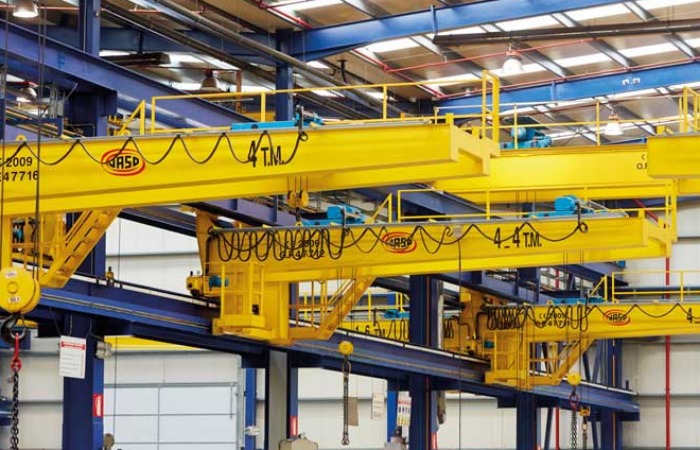
Booming Demand
Indias industrial landscape is undergoing a transformative wave, propelled by rapid urbanisation, infrastructure development, and a surge in manufacturing activities. Among the pivotal tools driving this evolution are industrial cranes. These robust machines are witnessing a soaring demand as they play a crucial role in various sectors, from construction to logistics, contributing to India's infrastructural growth.
Indias economy is on an upward trajectory, bolstered by ambitious initiatives such as Make in India and infrastructure development projects like Bharatmala and Sagarmala. These endeavours aim to enhance manufacturing capabilities, modernise transportation networks, and boost overall economic growth. As a result, industries spanning construction, logistics, automotive, and shipbuilding are experiencing unprecedented expansion, driving the need for efficient material handling equipment, particularly industrial cranes.
Speaking on the market for industrial cranes in India, Neeraj Waghela, Head “ Product Development, ElectroMech Material Handling Systems (India), said, India has been undergoing significant increase in infrastructure development across various sectors, including manufacturing, logistics, construction, and ports. Industrial overhead cranes are essential equipment for these industries, driving demand.
ElectroMech has dedicated R&D team to work on new developments and ideas based on customer feedback and market surveys. R&D team has been working on several projects and has launched few innovative products in last couple of years and response to these products has been amazing.
ElectroMech is amongst the largest manufacturers of industrial overhead cranes with more than 15,000 solutions supplied over and above 60 countries across the world. Said Waghela, We are recognised for our customised, heavy duty and modular solutions that address challenging material handling requirements across a wide spectrum of industries. We offer electrically-operated overhead cranes, gantry cranes, stacker cranes, explosion proof cranes, rubber-tyred gantry crane, battery operated transfer car, process crane, wall travelling crane and jib crane.
He added, Digitalisation and automation in crane design has been focussed over last few years and same has been incorporated in recently supplied products. These have been very much appreciated in the market as it helps in improving overall operation and availability of equipment.
Everest Engineering Equipment offers an innovative passenger hoist, operating on a single mass section, making it the largest of its kind globally with a capacity of 3.2 tonne. Notably, it can adapt to different capacities, such as 3.2 tonne and 2.7 tonne, each with its own speed specifications. The hoist's length, initially at 4 m, can be reduced to 3.6 m or 3.2 m, offering versatility in accommodating 38 people or 32 people, respectively.
Said PV Ramdev, Managing Director, Everest Engineering Equipment, The hoists most significant feature lies in its design flexibility. Users can adjust its length, speed, and capacity according to site requirements without the need for separate hoists. This innovation addresses various needs within the industrial sector, particularly in applications like steel and cement plants, providing a comprehensive solution for lifting diverse parts and aiding in the construction of permanent structures.
Several factors are contributing to the escalating demand for industrial cranes in India:
Challenges and Future Outlook
Despite the promising growth prospects, the Indian market for industrial cranes faces several challenges. Inadequate infrastructure, including poor road networks and limited availability of skilled labour, poses logistical challenges for crane deployment and operations, hindering the seamless execution of projects.
Intense market competition and price sensitivity among customers compel crane manufacturers to offer competitive pricing, potentially impacting profit margins and investment in research and development initiatives.
However, despite these challenges, the future outlook for the industrial crane market in India remains optimistic. Continued infrastructure investments, manufacturing growth, technological advancements, and a burgeoning focus on safety and sustainability are expected to sustain the upward trajectory of the market, presenting lucrative opportunities for stakeholders across the crane industry value chain.
Industrial cranes are emerging as indispensable assets driving India's infrastructural growth and economic development. With demand stemming from diverse sectors including construction, manufacturing, logistics, and ports, the market for industrial cranes in India is witnessing robust expansion. By embracing technological innovations, customisation, and sustainable practices, stakeholders in the crane industry are poised to capitalise on the vast opportunities offered by India's dynamic economic landscape, thereby contributing to the nation's journey towards becoming a global economic powerhouse.


 +91-22-24193000
+91-22-24193000 Subscriber@ASAPPinfoGlobal.com
Subscriber@ASAPPinfoGlobal.com